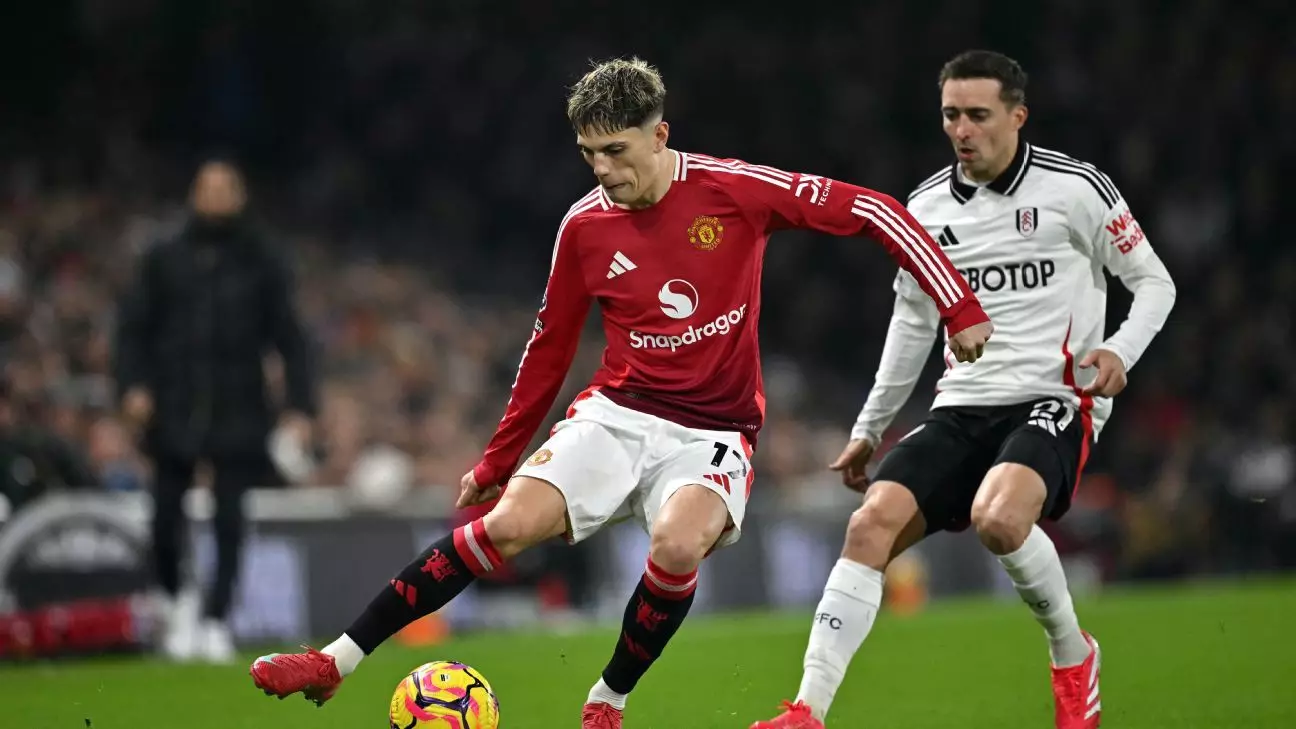The young Argentine winger, Alejandro Garnacho, has recently captured the attention of the football world, particularly through the comments made by his coach, Ruben Amorim. Amorim has highlighted Garnacho’s significant transformation and his renewed commitment to the team as factors that have allowed him to reclaim his position within the Manchester United squad. Just seven weeks ago, both Garnacho and his fellow academy talent, Marcus Rashford, found themselves on the sidelines during a critical match against Manchester City—a decision that raised eyebrows at the time. However, Garnacho’s persistent drive has propelled him back into the limelight, distinguishing him in contrast to Rashford’s continued absence.
In the recent Europa League match against Steaua Bucharest, Garnacho showcased his improving skill set by making a notable impact off the bench. This performance accentuated Amorim’s assertion that Garnacho has ultimately changed not only his own circumstances but significantly influenced the team dynamics. Amorim opined that the young player’s understanding of tactical demands and his openness to coaching have been pivotal. This self-awareness and adaptability could serve as a model for other young players striving to make their mark at top clubs.
While Garnacho flourishes, Rashford’s situation has evolved into a subject of scrutiny. The dichotomy of their paths—Garnacho’s ascension versus Rashford’s marginalization—presents a fascinating narrative about youth development and resource allocation within elite football clubs. Amorim has publicly expressed the need for Rashford to undergo a personal transformation, yet he simultaneously praises Garnacho for his willingness to adapt. This parallel could indicate varying responses to pressures associated with player development and management styles.
The contrasting fates of these two players emphasize the delicate balance coaches must strike between nurturing talent and demanding accountability. Garnacho appears to have embraced Amorim’s demanding coaching style, perceiving it as a pathway to growth. Such a mindset is crucial in a competitive environment like the Premier League, where players are continually evaluated and often face the threat of relegation to the sidelines.
Despite speculation linking Garnacho with lucrative transfers to clubs like Napoli and Chelsea—fueled by the financial realities facing Manchester United—the latest indications suggest that the club may prioritize keeping its promising talents. Amorim has articulated a firm commitment to integrating more academy graduates into the first team, recognizing the importance of homegrown talent. This strategy not only fortifies the squad but also aligns with sustainability measures that modern football clubs must adopt.
Further emphasizing this vision, Amorim noted players like Kobbie Mainoo, who similarly exhibited outstanding performances, as vital to United’s future success. With the essence of Garnacho’s journey serving as a beacon, it’s clear that the club is recognizing the value of young players more than ever. The push towards increased reliance on the academy could reshape Manchester United’s identity, promoting the ‘class of’ philosophy that once defined the club.
Garnacho’s resurgence illustrates the importance of adaptability, resilience, and the influence of strong leadership in player development. As he continues to evolve under Amorim’s guidance, the broader implications for Manchester United’s approach to youth will be crucial in determining the club’s future trajectory.

